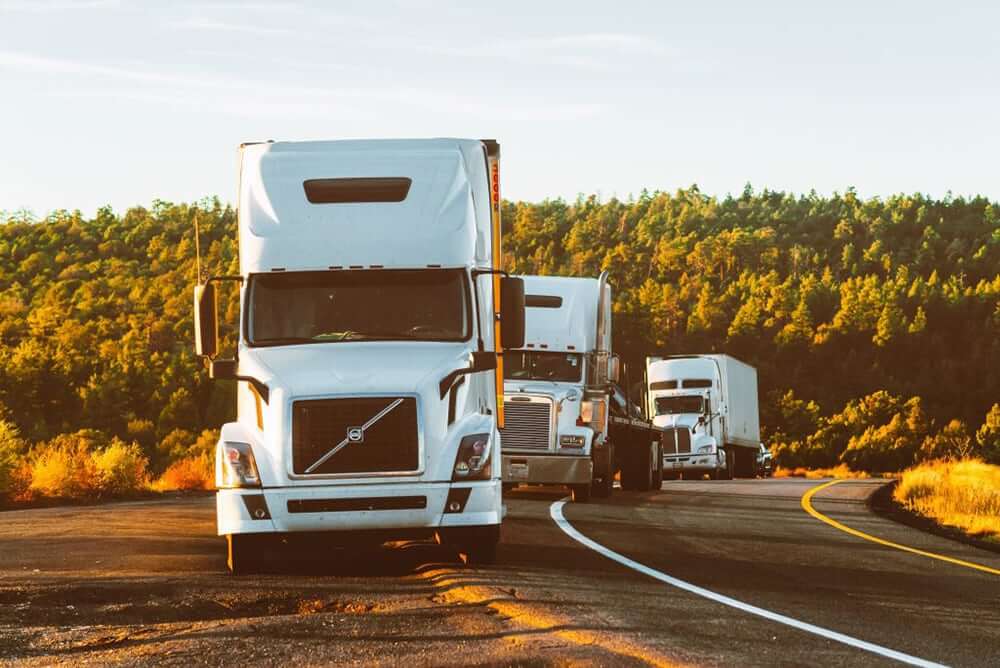What We Can Learn About Retail From Pandemic Delivery Data
Examining the impact of COVID-19 on retail, highlighting the surge in e-commerce and the role of efficient delivery systems to maintain business continuity and customer satisfaction.

Examining the impact of COVID-19 on retail, highlighting the surge in e-commerce and the role of efficient delivery systems to maintain business continuity and customer satisfaction.

In 2020, amid the COVID-19 pandemic, the retail industry underwent a significant delivery transformation as consumers were confined to their homes and unable to shop in person. While e-commerce has been steadily increasing over the last decade, it saw a significant increase in 2020, with online shopping increasing by 44%. Deliveries became a key differentiator for business success during these turbulent times, enticed by promises of two-day and/or free shipping - something consumers have come to expect as commonplace in 2025.
As a result, the transportation industry experienced an increase in activity. Omnitracs released its first Industry Intelligence report, delving into the relationship between delivery miles driven and sales of priority consumer goods, to better understand how the retail and transportation industries interacted. The transportation industry was found to be a key indicator of retail success and can be used as a tool to help businesses forecast future events, according to the study.

In 2020, the miles driven by fleets delivering retail goods and overall retail sales correlated very closely month to month, according to the data. Retail deliveries dropped dramatically at the start of the pandemic, according to research, as state and local stay-in-place orders prevented fleets from operating and customers from visiting brick-and-mortar stores. Consumers realized they could still buy their favorite things by ordering online and taking advantage of no-contact pickup as restrictions began to ease in April, and retail deliveries showed an immediate recovery with a huge spike in May as consumers realized they could still buy their favorite things by ordering online and taking advantage of no-contact pickup.
When drilling down into the most talked about goods of 2020, however, three sectors saw the most parallels: paper goods, sporting goods, and grocery/alcohol.

It’s no surprise that retail sales matched overall transportation miles during the pandemic — and both industries learned valuable lessons from the one-of-a-kind events that 2020 brought. Companies have learned the value of crisis planning, for example. When it came to toilet paper deliveries in the United States, the country had a normal amount of supply that simply wasn’t enough to meet the unusually high demand. When the supply chain was squeezed, however, deliveries resumed at a normal pace.
D-to-C delivery also provided new opportunities for retailers to stay profitable after the pandemic’s initial halt. D-to-C offerings were convenient before the pandemic, but the pandemic made that convenience a necessity. Peloton is a good example of this, as it participated in the sales that occurred during the unusually high movement of the sporting goods sector in May. Companies that use a D-to-C model should keep investing in it because it will continue to be the preferred shopping method for many consumers after the pandemic. These companies should also examine their scheduling, routing, and delivery systems as part of this to ensure continued delivery success. Route optimization can save a lot of money in terms of fuel and time, as well as improve customer satisfaction and retention by shortening delivery times.
This transportation data tells a compelling story about retail shifts starting in 2020, and it can also be used to forecast future supply and demand changes, allowing businesses to make more informed decisions about getting their products into consumers’ hands.
If you’re anticipating offering deliveries to your customers, consider using EasyRoutes local delivery routes app for Shopify. It takes your orders and transforms them into local delivery routes you can delivery yourself or share with a driver. It’s a full delivery management solution from inventory/packing lists to customer notifications.

EasyRoutes is a local delivery route planner app that allows you to create a delivery route in a matter of seconds. You can then take your routes and share them with drivers, or you can deliver them yourself using our mobile-friendly driver view.
Shopify and your store’s orders are seamlessly integrated with EasyRoutes. There’s no need to waste time exporting and importing spreadsheets anymore. Simply select the orders you want to deliver, and EasyRoutes will calculate the most cost-effective delivery route.
Advanced features in EasyRoutes make delivery planning a breeze. As an example, smart route-splitting divides your orders into as many optimized routes as needed. We also provide a route inventory that can be used as a packing list to ensure that you or your drivers have everything they need before departing.
The delivery route app EasyRoutes was designed with simplicity in mind. There’s no longer any need to deal with cumbersome enterprise route planner apps. EasyRoutes makes it simple to plan routes.
Learn more about our optimized route planning software at the EasyRoutes website, or install EasyRoutes from the Shopify App Store to start streamlining your local deliveries today!
EasyRoutes' mission is to equip every business with the software tools they need to deliver products to their customers in a delightful way. Thousands of worldwide choose EasyRoutes to power their local deliveries across dozens of product categories, from meal kits and groceries to coffee, cupcakes, kibble, and so much more. Our easy-to-use route planning and delivery optimization app is certified Built for Shopify, a two-time Shopify staff pick, and the top rated local delivery app on the Shopify App Store.